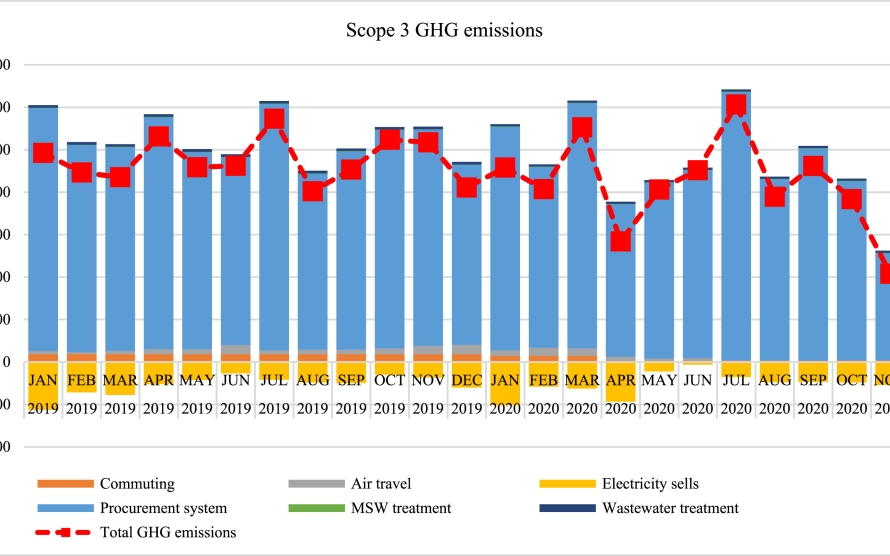COVID-19 impact on an academic institution's greenhouse gas inventory: The case of Cornell University
Topics

Controlling greenhouse gas (GHG) emissions under rapid economic development is a major global challenge and must be addressed in order to avoid major impacts of climate change. Therefore, the accounting of GHG emissions is an important basis for regional climate change mitigation plans. In order to work towards achieving this, a standardization of GHG emissions accounting methodologies should be developed, which will promote a deep decarbonization at different geographical scales. This study builds a complete GHG emissions inventory of the Cornell University campus, quantifying the university's Scope 1, 2, and 3 GHG emissions and identify the main emissions sources. use an EIO-LCA model to investigate the GHG emissions connected to the campus procurement system. The impact of COVID-19 is explored from the perspectives of campus energy systems, transportation, and products & services consumption, which helped to determine the driving forces of GHG emissions fluctuation during the pandemic. Results show that overall, Scope 3 emissions contributed to the largest share of Cornell's GHG emissions (60.4%), followed by Scope 1 (37.8%) and Scope 2 (1.7%). The total GHG emissions of Cornell University in 2019 and 2020 were 463.5 and 404.7 thousand metric tons CO2e, respectively. During the COVID pandemic, the campus GHG emissions dropped by 10.99% in 2020 when compared to the 2019 level. When compared to 2019, 2020 Scope 1 GHG emissions reduced by 8.9%, Scope 2 GHG emissions increased by 39.5% and Scope 3 dropped by 16.1%. This study provides a comprehensive GHG accounting framework for universities in order to reach sustainable and carbon-neutral campus targets and analyzes the impact of unpreceded crises on campus life and the environment.
